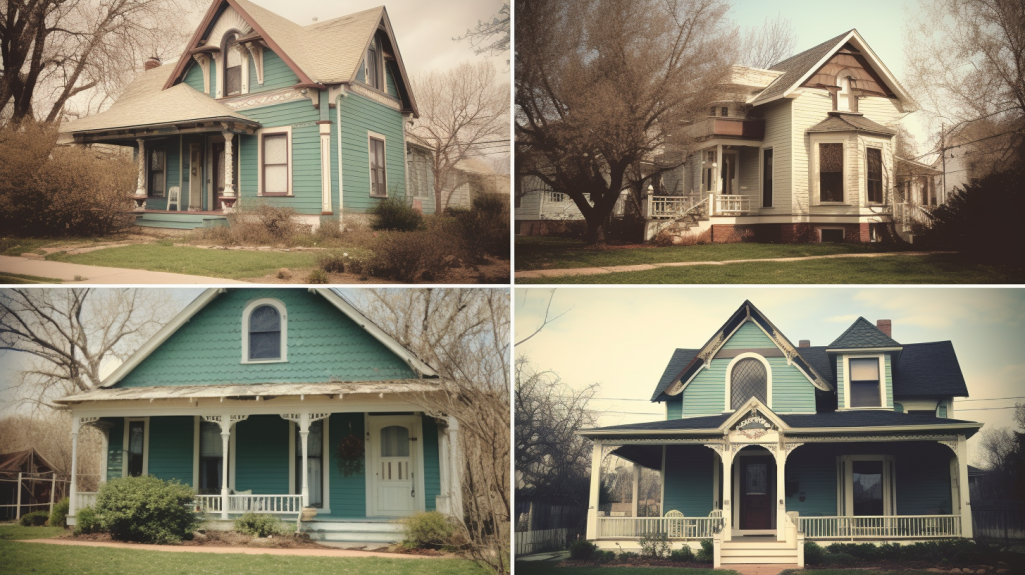Vintage homes, cherished for their timeless charm and historical significance, are scattered across the United States, reflecting the diverse architectural styles of different eras. While the definition of a vintage home may vary from state to state, there are common themes and regulations that guide homeowners in preserving these architectural treasures. In this article, we will explore what constitutes a vintage home in each state and delve into the restrictions and allowances that come with owning such a property.
Defining a Vintage Home
A vintage home is typically considered a residence built between the late 19th century and the mid-20th century. These homes showcase distinctive architectural features from the era they were constructed, such as ornate moldings, high ceilings, hardwood floors, and unique fixtures. Owning a vintage home is a delightful experience, but it also comes with responsibilities, as preserving the historical integrity of these properties is essential.
State-by-State Regulations
California
In California, vintage homes are generally recognized as structures built before 1940. Homeowners are encouraged to preserve the original facade and architectural details. While interior modifications are allowed, any external changes often require approval from local preservation boards to ensure the historical character is maintained.
New York
In New York, vintage homes are those constructed before 1945. Homeowners are obliged to adhere to preservation guidelines, especially in designated historic districts. Modifications, such as window replacements and roofing changes, may require permits from the State Historic Preservation Office.
Texas
Vintage homes in Texas are typically homes built before 1930. The state encourages the preservation of historic properties through various incentive programs. Homeowners can make interior changes freely, but external alterations, including paint colors and architectural modifications, are subject to approval by local historical commissions.
Illinois
In Illinois, vintage homes are considered those constructed before 1950. Homeowners are encouraged to maintain the historical features, with some cities offering tax incentives for preservation efforts. While interior renovations are permitted, exterior changes usually require approval from local historic preservation agencies.
Florida
Vintage homes in Florida are typically those built before 1945. Preservation efforts are supported through property tax exemptions for historically designated homes. Homeowners can make interior changes, but alterations to the facade and landscaping often require approval from local historic preservation boards.
Massachusetts
Massachusetts considers homes built before 1940 as vintage properties. The state offers tax incentives and grants to promote preservation. Homeowners can make interior modifications without strict regulations, but exterior changes, especially in designated historic districts, require approval from local historical commissions.
Preservation Guidelines and Changes Allowed
Preserving a vintage home involves balancing the desire for modern comfort with the need to maintain historical authenticity. While regulations vary, some common preservation guidelines apply across states:
Exterior Modifications
Preservation guidelines typically restrict significant alterations to the exterior of vintage homes. Homeowners are often required to preserve the original facade, including architectural details, windows, doors, and roofing materials. Changes like adding a porch, altering the roofline, or changing the siding material usually require approval.
Paint Colors
Choosing appropriate paint colors is crucial for maintaining the historical integrity of vintage homes. Some states provide guidelines or lists of historically accurate paint colors, ensuring that the home’s appearance aligns with its era of construction.
Window Replacements
Preserving original windows is a common requirement for vintage homes. Homeowners are encouraged to repair rather than replace windows, and if replacement is necessary, they must choose styles that match the era when the house was built.
Interior Modifications
While the exterior is subject to stringent regulations, homeowners often have more flexibility when it comes to interior modifications. They can renovate kitchens, bathrooms, and other living spaces to meet modern needs without strict adherence to historical accuracy.
Conclusion
Owning a vintage home is a journey through time, allowing homeowners to live in a piece of history. Across American states, preservation guidelines aim to strike a balance between maintaining the historical integrity of these properties and allowing necessary modifications for modern living. Understanding these regulations is vital for homeowners to preserve the unique charm and character of their vintage homes while enjoying the comforts of contemporary living. By respecting the past, homeowners can ensure that these architectural gems continue to stand the test of time, enriching the heritage of their communities for generations to come.

